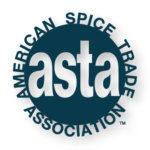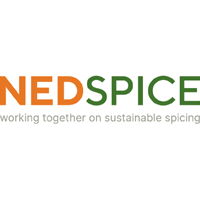ASTA’s mission is to ensure the supply of pure, safe spice and provides members with resources to mitigate the potential presence of naturally occurring elements, such as heavy metals.
Science
As with any food product, traces of heavy metals in spices naturally varies due to environmental factors, like where the crops are grown and the part of the plant from which they are sourced. Spices come from dozens of crops grown in many countries worldwide. Read More.Moreover, spices are sourced from different parts of the plant, such as the roots, seeds, bark, fruit, or leaves. Heavy metals are naturally occurring elements in the Earth’s crust, so any natural product that comes into contact with soil or groundwater has the potential to take up trace amounts of heavy metals that cannot be removed.
Safety
Global regulators have concluded that spices are safe for human consumption. While spices are an integral part of most people’s diets, they are consumed in small amounts as food ingredients and do not account for a large portion of daily food intake, especially compared to other food groups. Learn More.In fact, the average American eats a fraction of a gram of spices per day, amounting to only 0.01 percent of a person’s total diet. As such, contributions by spices to a person’s heavy metal exposure, if any, would be minor compared to the consumption of other foods. Studies that evaluate the presence of metals in spices and account for average consumer exposure confirm that consuming spices is safe.
Regulation
Because heavy metals occur naturally in spices, global regulatory authorities have considered heavy metal limits for spices that are based on natural occurrence, environmental considerations, production, and consumption patterns. Learn More.Several global regulators, most notably the European Commission, have established limits for lead in spices supported by available scientific evidence and enable access to a safe and reliable supply for consumers. A similar approach is under consideration by the World Health Organization’s Codex Committee on Contaminants in Food. Importantly, these standards avoid a one-size-fits-all approach and, instead, differentiate by spice type and element. The spice industry supports these limits.
In the United States, The Food and Drug Administration (FDA) develops guidance levels for toxic elements in products determined to be the most significant for public health but has not identified levels of concern for spices due to their minor contribution to dietary exposure. The spice industry supports FDA establishing federal heavy metal action levels and has encouraged the agency to explore harmonizing levels with those set by international bodies.
Industry Stewardship
The American Spice Trade Association takes proactive steps to reduce the possibility of trace amounts of heavy metals in spices. See More.For instance, ASTA publishes guidance for the spice industry, specifically on heavy metal limits and Good Agricultural Practices, to educate spice producers on how to best grow crops, manage irrigation, monitor soils, and safely transport product to minimize element uptake from the environment. Furthermore, the spice industry works with producers and other partners, such as the Sustainable Spice Initiative, worldwide to provide training on these practices while investing in ongoing research on the best ways to mitigate traces of toxic elements in the spice supply chain.
For more information, check out these resources:
ASTA Members searching for additional resources, click here.
Statements:
March 6, 2024: ASTA Statement on FDA Cinnamon Recall






